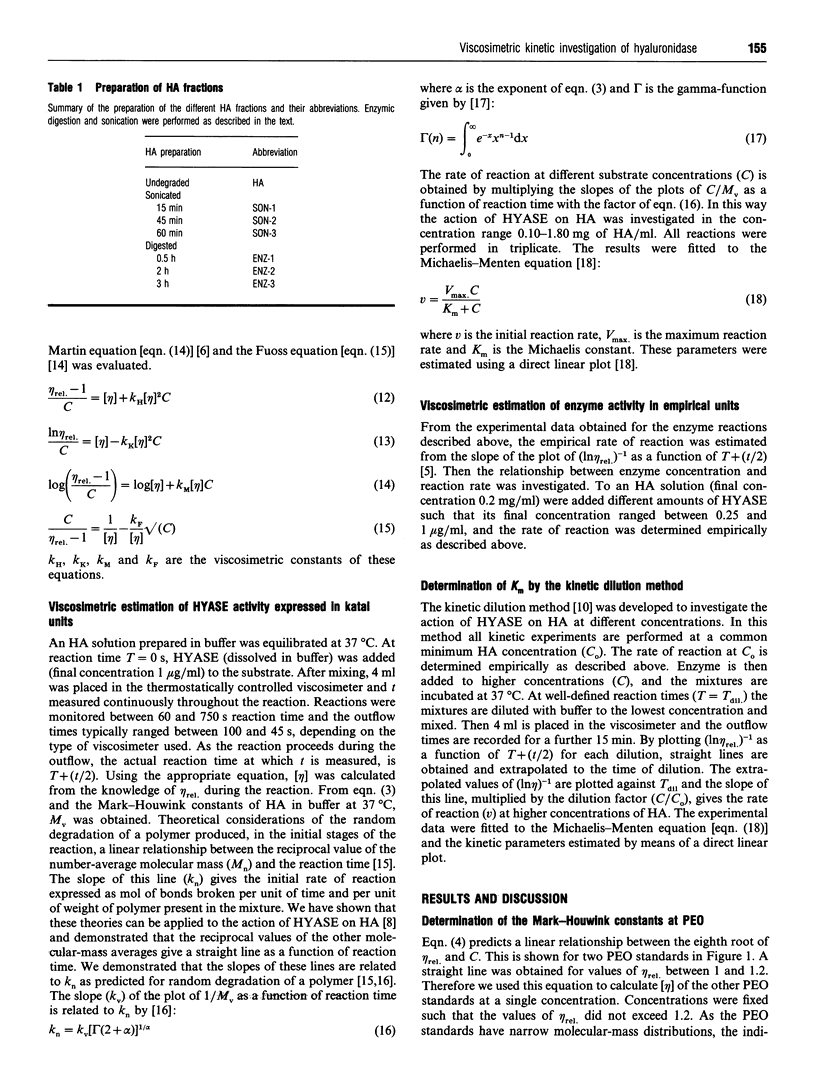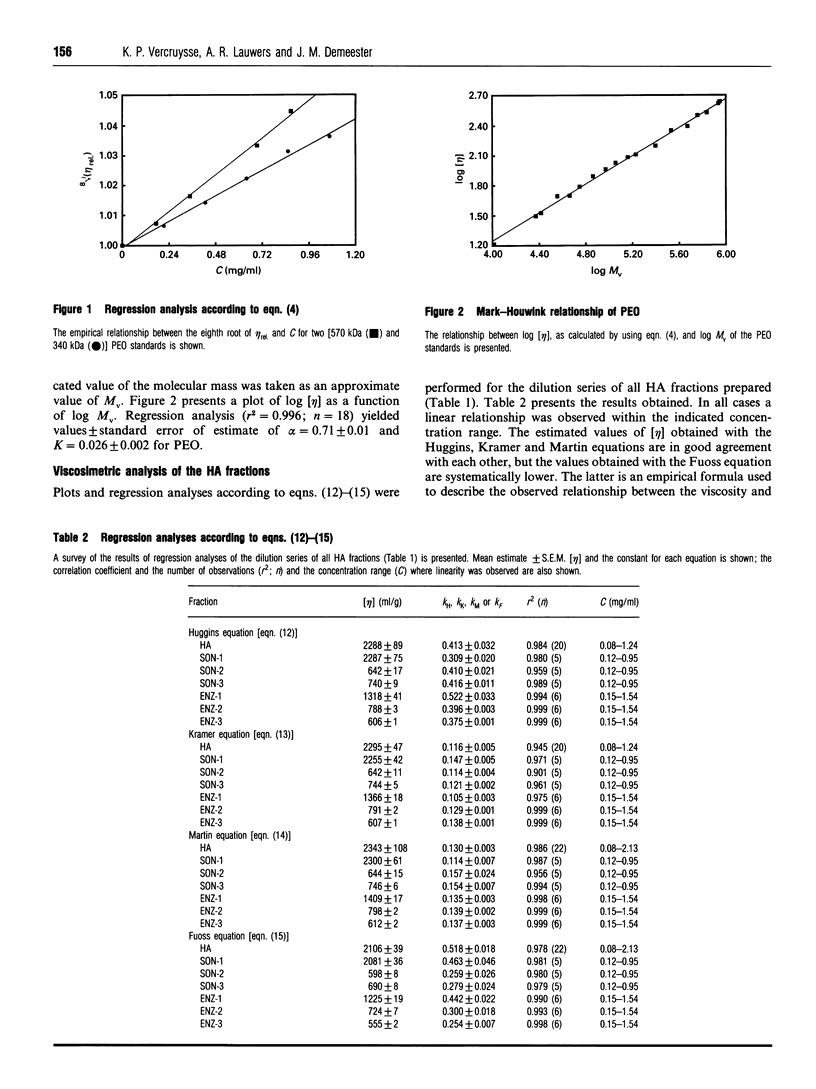Abstract
We describe an investigation of the action of hyaluronidase on hyaluronan using viscosimetry. A new viscosimetric approach was developed for determining the activity of the enzyme in katal units. This approach requires knowledge of several parameters (e.g. Mark-Houwink constants) which were determined by combining viscosimetric measurement and gel-permeation chromatography analysis. Using all the necessary parameters we determined the kinetic parameters of the enzyme and found that 250 i.u. correspond to 1 nkat. An empirical viscometric was used to estimate the activity of the enzyme, and the Km was determined using the kinetic dilution method. The estimates produced by the absolute and empirical approaches were in good agreement. We demonstrate that the empirical estimation of the reaction rate is related to the rate of reaction expressed in absolute units and thus provides a good estimate of enzyme activity. Furthermore, we have found an empirical relationship which enables investigation of the kinetics of the enzyme in a simple and sensitive way by viscosimetry.
Full text
PDF







Selected References
These references are in PubMed. This may not be the complete list of references from this article.
- DI FERRANTE N. Turbidimetric measurement of acid mucopolysaccharides and hyaluronidase activity. J Biol Chem. 1956 May;220(1):303–306. [PubMed] [Google Scholar]
- De Smedt S. C., Dekeyser P., Ribitsch V., Lauwers A., Demeester J. Viscoelastic and transient network properties of hyaluronic acid as a function of the concentration. Biorheology. 1993 Jan-Feb;30(1):31–41. [PubMed] [Google Scholar]
- Dybkaer R. Quantities and units in enzymology. Enzyme. 1977;22(2):91–123. doi: 10.1159/000458775. [DOI] [PubMed] [Google Scholar]
- Gacesa P., Savitsky M. J., Dodgson K. S., Olavesen A. H. A recommended procedure for the estimation of bovine testicular hyaluronidase in the presence of human serum. Anal Biochem. 1981 Nov 15;118(1):76–84. doi: 10.1016/0003-2697(81)90159-7. [DOI] [PubMed] [Google Scholar]
- Harrison R. A. Preliminary characterization of the multiple forms of ram sperm hyaluronidase. Biochem J. 1988 Jun 15;252(3):875–882. doi: 10.1042/bj2520875. [DOI] [PMC free article] [PubMed] [Google Scholar]
- Laurent T. C., Fraser J. R. Hyaluronan. FASEB J. 1992 Apr;6(7):2397–2404. [PubMed] [Google Scholar]
- MALMON A. G. Small angle x-ray scattering studies of the size, shape, and hydration of catalase. Biochim Biophys Acta. 1957 Nov;26(2):233–240. doi: 10.1016/0006-3002(57)90001-x. [DOI] [PubMed] [Google Scholar]
- Reed W. F., Reed C. E., Byers L. D. Random coil scission rates determined by time-dependent total intensity light scattering: hyaluronate depolymerization by hyaluronidase. Biopolymers. 1990;30(11-12):1073–1082. doi: 10.1002/bip.360301108. [DOI] [PubMed] [Google Scholar]
- Shimada E., Matsumura G. Viscosity and molecular weight of hyaluronic acids. J Biochem. 1975 Sep;78(3):513–517. doi: 10.1093/oxfordjournals.jbchem.a130935. [DOI] [PubMed] [Google Scholar]
- Vercruysse K. P., Lauwers A. R., Demeester J. M. Kinetic investigation of the degradation of hyaluronan by hyaluronidase using gel permeation chromatography. J Chromatogr B Biomed Appl. 1994 Jun 3;656(1):179–190. doi: 10.1016/0378-4347(94)00045-x. [DOI] [PubMed] [Google Scholar]
- Yang C. H., Srivastava P. N. Purification and properties of hyaluronidase from bull sperm. J Biol Chem. 1975 Jan 10;250(1):79–83. [PubMed] [Google Scholar]


